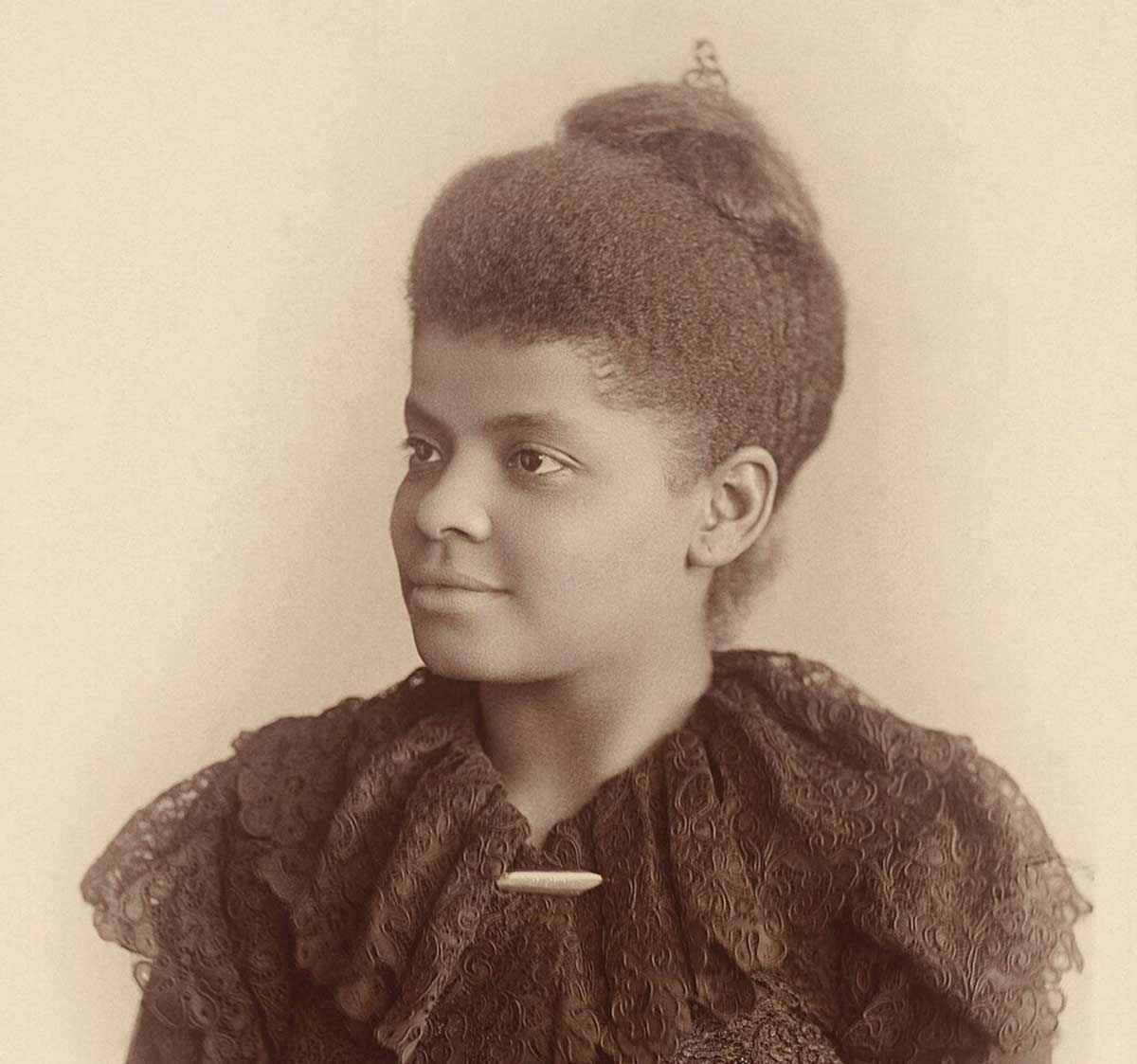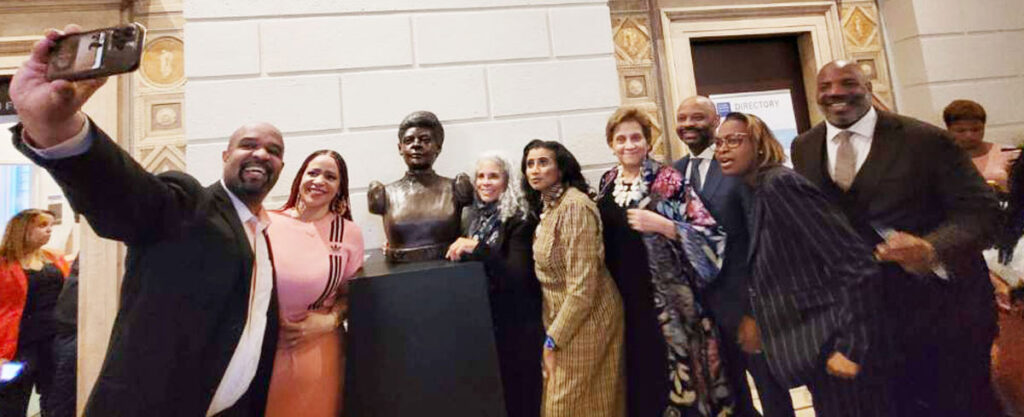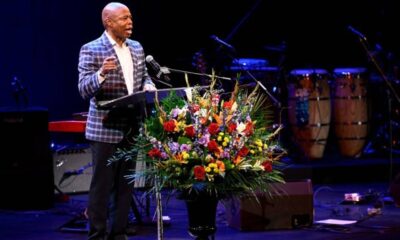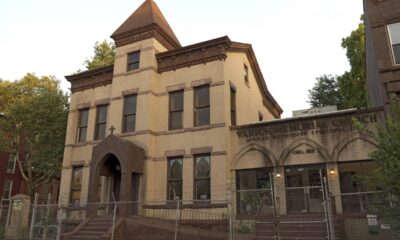Black History
Ida B. Wells Barnett’s Legacy of truth-telling inspires journalists to this day

Her Life and Legacy Honored at Columbia Journalism School Symposium
Distinguished national voices in media, scholarship and the arts joined the Columbia Journalism School in commemorating the life, legacy, and journey of Ida B. Wells, last Monday, March 25 –the 93th anniversary of the activist journalist’s passing.
The celebratory event, hosted by Dr. Jelani Cobb, Dean of the Columbia Journalism School and Henry R. Luce Professor of Journalism., was held in Pulitzer Hall, and explored her contributions to journalism, the Civil Rights movement and American history.
It was a day of insightful and revelatory conversations, culminating in the unveiling of a bronze statue of Wells by West Coast artist Dana King, a former broadcast news anchor. The bust, a gift of Mark Mason and Carolyn Mason, is located in the lobby of Pulitzer Hall.
The panelists included: Dean Cobb; Kimberlé Crenshaw; June Cross, Fred W. Friendly Professor of Media and Society; Dan Duster; Paula Giddings; Dorothy Butler Gilliam, ‘61 M.S.; Errin Haines; Nikole Hannah-Jones; Dana King; Marquita Pool-Eckert, ‘69 M.S.; Joy-Ann Reid; and Jacqueline Woodson.

Photo: Bernice Elizabeth Green
Attended by Columbia Journalism School alums, faculty, and students, the symposium also explored the ongoing opportunities and challenges facing the journalism industry around representation and inclusion.
Wells was born in Mississippi three years before Emancipation became a fearless investigative journalist before age 30, in Memphis, Tennessee, and later a leader in the early Civil Rights Movements.
For her journalism work, it is reported she traveled throughout The South interviewing witnesses and gathering news reports of incidents, which were published in the newspaper she edited and co-owned, The Memphis Free Speech and Headlight.
During her career as a journalist, Wells published her work in T. Thomas Fortune’s New York Age, The Red Record, the Chicago Conservator (which her husband founded), and other local journals.
Her community advocacy work included: seeking equity in suffrage, housing, criminal justice, and education. Her legacy of truth-telling inspires journalists to this day. As a secretary of the National Afro-American Council, she participated in the Niagara Movement, which led to the founding of the National Association for the Advancement of Colored People.
She founded the National Association of Colored Women, which aided migrants from the South, and founded Chicago’s Alpha Suffrage Club, possibly the first Black women’s suffrage group and the Negro Fellowship League.
Giddings, author of The Prescient Life of Ida B. Wells, noted that Ida B. Wells seems to say “Follow me and I will lead you to where you need to go. She embodies the energy we feel now.”
Even her “willful independence” as a young woman in her late 20’s and early 30’s making in shaping a career around her community’s needs made her a woman ahead of her times.
She speaks to us today, said Giddings, and our willful determination to survive, to, in effect, “Fight for our rights.”
“Her work not only remains relevant today,” Dean Cobb referenced in a statement last week. “But actively inspires the next generation to follow in her footsteps.”
A question centered around how we engage Black girls in conversations about Wells’ legacy. Ms. Gilliam, the first African American female reporter hired by The Washington Post (1961) said, “We must tell them, we can’t let ourselves be hemmed in by fear. Ida B. Wells did not let herself be led or dominated by fear.”
Other panelists reminded that at a young age, Ida B. Wells, armed with knowledge and skill, knew what she wanted to do, and she did it alluding to the fact, as Joy Reid said, “If there’s a story, and you’re the only one in the room who knows that story, then you must tell that story.” Another journalist said, “You also must have people around you who support you. You must have your posse, to survive.”
Another panelist said girls should be encouraged to read more about Ida B. Wells, and other historical greats, noting Giddings’s book, “Ida B. Wells: A Sword Among Lions,” and Woodson’s books, as a good start.
The Symposium panel discussions covered the current struggle for racial and gender equality, and how Ida B. Wells impacted both areas through her tenacious “truth-telling” journalism and forceful civil and human rights advocacy.
Dean Cobb said in a press announcement, “There is a tradition in this country of the advocacy journalist, and within that long history Ida B. Wells stands as an icon.”
In 2020, Wells was awarded a posthumous Pulitzer Prize for her reporting on the lynching of African Americans.
Next week, Our Time Press looks at Ida B. Wells’ Brooklyn legacy and features more images from the conference.
It was noted that the Symposium was made possible by the generosity of Betty Baye, ʼ80 M.S., Wayne Dawkins, ʼ80 M.S., Cheryl Devall, ʼ82 M.S., Karen Gray Houston, ʼ73 M.S., Michelle Johnson, ʼ82 M.S., David Peterkin, ʼ82 M.S., Randall Pinkston, Gayle Pollard-Terry, ʼ73 M.S., Janelle Richards, ʼ10 M.S., Reginald Stuart, ʼ71 M.S., and Linda Wright-Moore, ʼ73 M.S..





